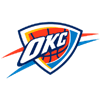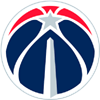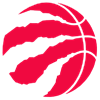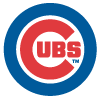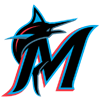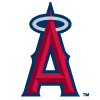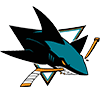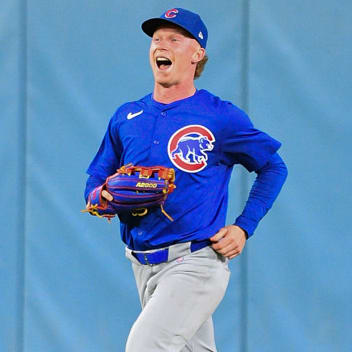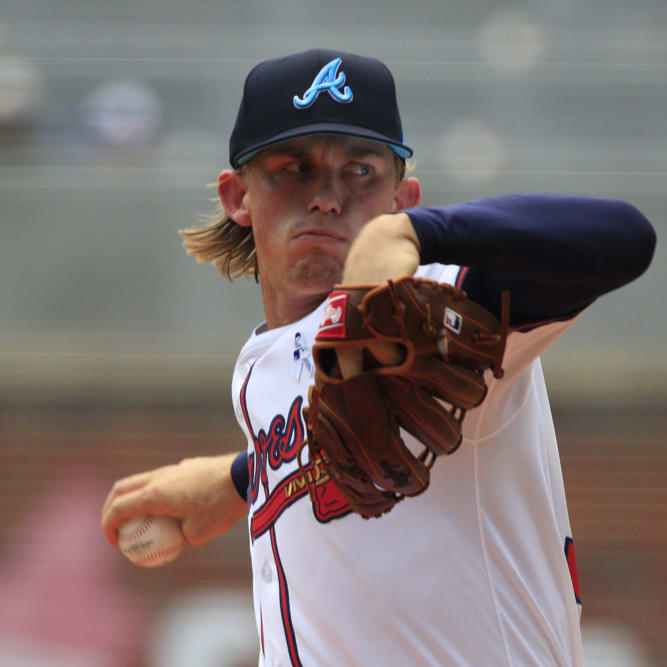Last week, I began going division by division looking for players I thought had a chance to break out in 2020, whenever the 2020 season actually gets here. Since then, the idea of expanded 29-man rosters for the first month the year, as a way to soften the blow on pitching staffs, has been floated. While that wouldn't matter much in shallower fantasy leagues, in deeper formats – particularly AL-only and NL-only – more guys with jobs means more guys with chances to prove they aren't just end-of-roster scrubs, and more guys who might have lost battles for spots in the spring who can continue that battle when games actually count in the standings. It's also going to mean fewer hard choices on players without any minor-league options. I highlighted Derek Fisher last week for the Blue Jays, and at the time he wasn't even necessarily guaranteed a big-league job. With an expanded roster, Toronto would have no reason to cut him loose right away.
Now, let's take a look at the NL East:
Atlanta
Shallow: Sean Newcomb
I'm not a big believer in Newcomb, truth be told, but part of being a fantasy sports writer is recognizing that your opinions are far from infallible. The southpaw flamed out of the rotation last year but re-established himself in the bullpen, and this spring he got another chance to show he could handle being a starter. The delayed beginning to the season probably means Cole Hamels will be healthy,
Last week, I began going division by division looking for players I thought had a chance to break out in 2020, whenever the 2020 season actually gets here. Since then, the idea of expanded 29-man rosters for the first month the year, as a way to soften the blow on pitching staffs, has been floated. While that wouldn't matter much in shallower fantasy leagues, in deeper formats – particularly AL-only and NL-only – more guys with jobs means more guys with chances to prove they aren't just end-of-roster scrubs, and more guys who might have lost battles for spots in the spring who can continue that battle when games actually count in the standings. It's also going to mean fewer hard choices on players without any minor-league options. I highlighted Derek Fisher last week for the Blue Jays, and at the time he wasn't even necessarily guaranteed a big-league job. With an expanded roster, Toronto would have no reason to cut him loose right away.
Now, let's take a look at the NL East:
Atlanta
Shallow: Sean Newcomb
I'm not a big believer in Newcomb, truth be told, but part of being a fantasy sports writer is recognizing that your opinions are far from infallible. The southpaw flamed out of the rotation last year but re-established himself in the bullpen, and this spring he got another chance to show he could handle being a starter. The delayed beginning to the season probably means Cole Hamels will be healthy, but Newcomb needs only to be better than the exiled former king of Seattle, Felix Hernandez, to claim the No. 5 job. Newk's got the kind of high-K upside you should be looking for at the end of 12-team mixed drafts or auctions, and if the improved control he flashed as a reliever in 2019 carries forward, he seems capable of peak Robbie Ray kind of numbers.
Deep: Johan Camargo
Austin Riley is a big-time prospect and still the expected starter at third base for the better part of the next decade, but if he can't solve his contact issues, Camargo is the fallback option. He might be much better than a stopgap, though. The 26-year-old had a solid 2018 and a terrible 2019, but he spent this offseason getting in much better shape after apparently taking his spot in the big leagues for granted a bit last year. He's the kind of player that, if he were in the Cleveland organization, people might be hyping him up as the next Jose Ramirez – Camargo's an athletic switch hitter who's flashed the ability to hit for a good batting average and a bit of power, and he might need only a tweak to his approach, or simply more maturity, to unlock more thump. Such comps would overstate his fantasy ceiling, but if Camargo finds himself in a starting role, he could pop.
Marlins
Shallow: Lewis Brinson
The clock is definitely ticking on Brinson. The centerpiece of the Christian Yelich trade a couple years ago, the 25-year-old has been an absolute tire fire for the Marlins over the last two seasons, striking out in 29.7 percent of his at-bats with Miami en route to a putrid .189/.238/.294 slash line. Brinson's minor-league numbers – 16 homers, 16 steals and an .871 OPS in half a season at Triple-A last year – offer a tantalizing glimpse at his upside, though, if only he could make consistent contact. Well, that's just what he did this spring, managing a 1:3 BB:K in 31 plate appearances to go along with a 1.148 OPS and three homers. Teeny tiny sample? Sure. Enough reason for an endgame pickup, given his upside? Absolutely. The Marlins have other lottery tickets from the Yelich deal if Brinson is a bust – in theory, all four players they acquired from the Brewers could get big-league playing time in 2020 – but he remains their best hope of getting a new star out of it. If he flames out, the trade could go down as one of the worst of all time, so the organization has all the incentive in the world to try and turn him into, at the very least, a reliable, regular contributor. If you're looking for one more reason to think he'll finally figure out how to hit big-league pitching, he should have less defensive responsibility on his plate as the Marlins try to convert Jonathan Villar into a center fielder, pushing Brinson to right -- assuming he claims a starting spot at all, of course.
Deep: Isan Diaz
Speaking of the other three players involved in the Yelich deal, Jordan Yamamoto should win a rotation spot but doesn't seem to be much more than a No. 4/5 starter, while Monte Harrison is trying to avoid becoming Brinson 2.0 (29.9 K% in Triple-A last year). Diaz is probably the Marlins' next-best chance after Brinson of getting real value out of their end of the trade. The 23-year-old made his big-league debut last year and will open the season as the starting second baseman, and he posted a stellar .305/.395/.578 slash line 26 homers in 102 games at Triple-A in 2019. The smidge of speed he showed in the low minors hasn't held up – between two levels, he was only 5-for-12 on steal attempts last year – but he has the potential to hit for some power and a decent batting average. In fact, Diaz could put up numbers similar to what we'd projected for Ryan McMahon (.271, 23 homers), and it wouldn't look out of place on his resume. The main difference is, you can usually get Diaz 300-400 picks later in most drafts.
Mets
Shallow: Seth Lugo
Edwin Diaz remains the closer for the Mets, for now, but until he pitches in games that count it'll be impossible to tell whether they're going to get the 2019 version of him, the 2018 version, or something in between. Even if it's something in between, he probably hangs onto the job, but if the 2019 Diaz and his 2.3 HR/9 return, he should get a very quick hook. In that scenario, Lugo is the next man up, even though the team does in theory have other options such as Dellin Betances (who hadn't yet re-discovered his velocity when spring games were suspended) or Jeurys Familia (himself coming off a rough 2019). Lugo, on the other hand, has been excellent since moving to the bullpen a couple years ago, and while New York might prefer him in a high-leverage set-up role, he could become the next Kirby Yates if he gets a chance to handle the ninth inning. The good thing about picking him up in shallower formats is that, even if he isn't the full-time closer, he gets enough work and strikes out enough batters to still be useful, giving him a higher floor than many of the other potential breakouts I'm highlighting. Lugo's on this list for his ceiling, though – plus ratios, triple-digit strikeouts and saves – not his floor.
Deep: Andres Gimenez
Robinson Cano is 37 years old, and coming off the worst season of his career. Sure, he could rebound, even if it's just a dead cat bounce, but it's more likely he's just done. If the Mets decide not to stick with him at the keystone, their options to replace him are pretty limited. A healthy Jed Lowrie could be a decent stopgap, but, well, yeah. Jeff McNeil could slide over from third and J.D. Davis could head to the hot corner, but that might make the infield defense somehow even worse than it already is. Or, they could give the 21-year-old Gimenez a shot. His dynasty stock has taken a plunge the last year-plus, as he struggled to hit the ball with much authority at Double-A, but he does have some speed (38 SB, albeit with 19 CS, in 154 games at Binghamton) and he could grow into a bit more power, although he'd need to radically alter his approach to be more than a line-drive hitter. He'd also provide the team with a huge upgrade defensively, and in the long run his glove could supplant Amed Rosario at shortstop. An Orlando Arcia-like upside may not seem exciting, but Arcia's 2017 was pretty good, and in this steals-starved landscape if Gimenez can chip in a bonus 15 or so with a solid batting average, he'll be plenty valuable.
Phillies
Shallow: Scott Kingery
It was tough to find players for this list on the Phillies, because a) their lineup is pretty set and b) I'm not overly enamored with the organization's prospects beyond Spencer Howard, who's got too much hype to fall into an 'undervalued' basket (although if I were doing a separate list for redraft leagues, he'd be the clear choice here). After two middling years to begin his career, however, Kingery might have slipped under the radar. His 2019 was better than his 2018, but it still didn't jump off the page. The 25-year-old might be ready to keep building, though. He had stark splits last year – .889 OPS in the first half, .710 in the second – but it was revealed after the season he'd had some vision issues which got corrected by contacts. The Phils may also hit him leadoff, boosting his potential in runs. This is a guy who slashed .304/.359/.530 with 26 homers and 29 steals in the high minors in 2017. That kind of upside might be a little out of reach in the majors, but he could still turn into the NL version of Michael Brantley in his pre-injury prime, supplying steady five-category production.
Deep: Damon Jones
If the team does have one potential weak spot it's the rotation. Even if you pencil Howard into one spot behind Aaron Nola and Zack Wheeler, that still leaves the motley crew of Jake Arrieta, Zach Eflin,Vince Velasquez and Nick Pivetta to round it out, none of whom are sure things for one reason or another. It's a situation ripe for a surprise arm to burst onto the scene, and Jones might just be that guy. The southpaw was an unheralded 18th round pick in 2017, but he tore through the top levels of the minors last year. While his control regressed at Triple-A, his numbers before that were outstanding, highlighted by a 119:33 K:BB in only 80.1 innings between High-A and Double-A. Jones now features a fastball that touches 96 mph, a slider (with a grip borrowed from Trevor Bauer) that could be a potentially plus pitch, a nifty curveball and still-developing changeup. He's also got a workhorse frame and a deceptive delivery with long levers, allowing all his stuff to play up. He'll need to keep his control and command in check, as a deceptive delivery only buys you so much time in the bigs, but Jones could wind up being exactly what the righty-heavy Phillies rotation is missing. Even if he doesn't end up adding the necessary command and secondary pitches to cut it as a starter, he could still wind up with an Andrew Miller-like relief career.
Nationals
Shallow: Joe Ross
As with the Phillies and Howard, top prospect Carter Kieboom has a little too much buzz to qualify, even if his tepid spring performance did dampen his chances of an Opening Day assignment at third base for Washington. Instead, I'm going to highlight Ross, a 26-year-old right-hander who looked like a future staple of the Nats' rotation in 2015-16 before injuries, and eventually Tommy John surgery, derailed his progress. His stuff appeared to back late last year and in spring training, though, and he's viewed as the default No. 5 starter for the team to begin the season, ahead of Austin Voth and Erick Fedde. Ross' upside is purely that of a mid-rotation guy, but even in 12-team mixed you need pitchers like that to fill out your staff, and when they pitch for World Series contenders (or even the defending champs) to boost their win potential, so much the better.
Deep: Tanner Rainey
The Nats have a lot of veteran arms headlining their bullpen and don't seem like an obvious place to look for a closer lottery ticket, but think again. Sean Doolittle is all but guaranteed an IL stint every year. Daniel Hudson, last year's World Series relief hero, got waived by the Angels last spring and has a long, checkered injury history of his own. Even big free-agent signing Will Harris is a career set-up guy more than a real ninth-inning option, with 20 saves (and 114 holds) in 419 career appearances. If both Doolittle and Hudson break down, who are they going to turn to? In that scenario, Rainey and his 13.8 K/9 rate could look very enticing. The right-hander averages nearly 98 mph with his fastball and combines it with a closer-qualify slider, but his control and command have held him back from being truly dominant. Just a little step forward in that regard could make him the most dangerous arm in the team's bullpen, regardless of his role, but the path to saves on this roster isn't as narrow as it seems.








